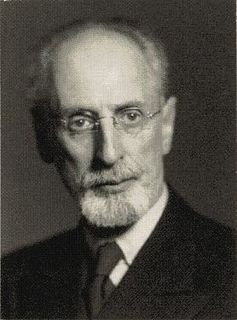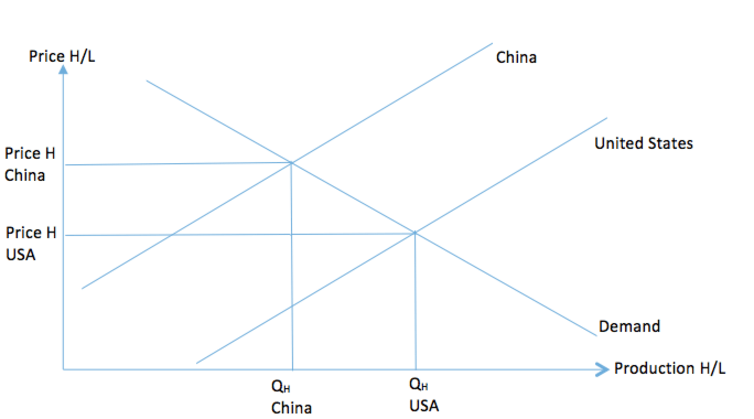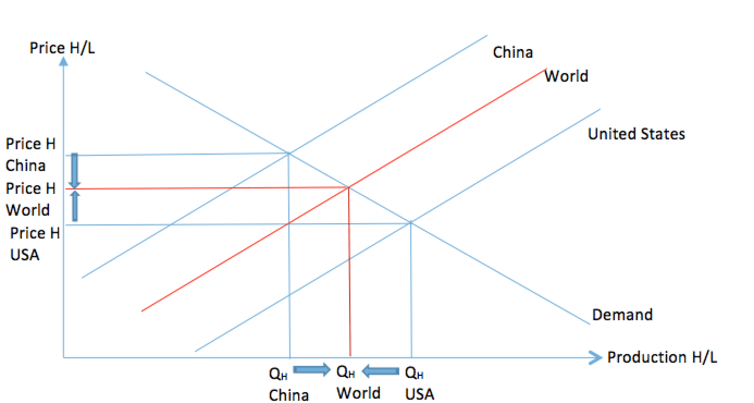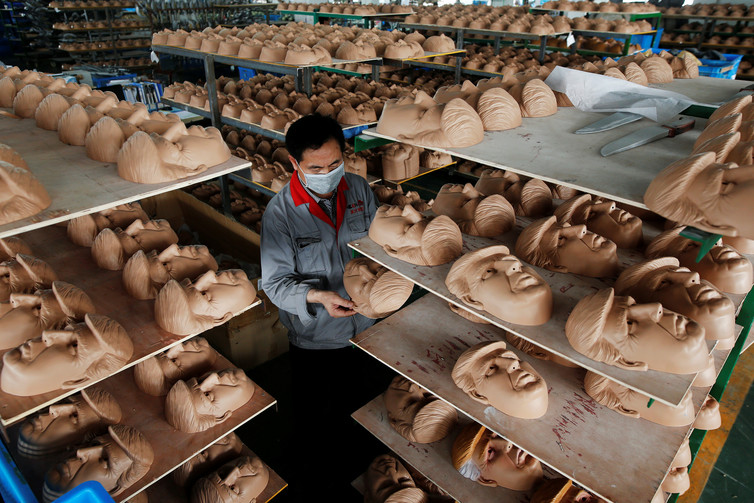Two Swedish Economists Foresaw the Backlash against Globalisation – Here’s How to Mitigate It
CAPITALISM, 15 May 2017
Rodrigo Zeidan - The Conversation
Work from the 1930s anticipated the backlash against globalisation.
15 May 2017 – Economists Eli Heckscher (1879-1952) and Bertil Ohlin (1899-1979) died more than three decades ago. But it’s fair to assume that neither would have been surprised by the underlying causes of Donald Trump’s election as president of the United States, or Brexit for that matter.
Their Heckscher-Ohlin (H-O) model of international trade – developed at the Stockholm School of Economics in the 1930s – clearly predicted today’s middle-class discontent bellowing at the ballot box.
The two Swedes recognised the simple but too-often-overlooked soft underbelly of global trade and growth: prosperity doesn’t distribute evenly. And workers in bustling export industries benefit at the expense of those who face foreign competition.

Eli Heckscher’s work predicted today’s middle-class discontent bellowing at the ballot box.
Slarre via Wikimedia Commons
Inherent inequality
Building on the H-O model, academic economist Branko Milanovic has described in an elegant chart how income around the world changed from 1988 to 2008. Only one income bracket failed to get significantly richer: those around the 80% percentile. That’s the middle class in the developed world and the upper class in poor countries.
Ironically, Milanovic’s graphic both resembles and reflects the proverbial elephant in the room that carried Trump to victory in regions such as the US Rust Belt, which are populated by those he characterised as forgotten Americans.
It supports Heckscher and Ohlin’s fundamental premise about the unequal consequences of economic growth – rare is the tide that lifts all boats. Milanovic demonstrates the disparities of our era of globalisation: the rich get richer, the poor get much less poor, and a big chunk of the middle class gets left behind.
The argument is relatively easy to understand. Assume that in a country there are only two industries, divided into high-skilled and low-skilled workers who produce high-tech content (product H) and low-tech content (product L).
Country A (say the United States) has proportionally more high-skilled individuals than country B (let’s call it China). Let’s further assume that both the Chinese and Americans have similar tastes for products. That’s a lot of assumptions, but the intuition should be straightforward: countries with a higher proportion of more educated workers have an advantage in producing more technologically advanced goods. It’s as simple as that.
In the absence of trade, the United States would produce more goods and services that use high-skilled workers than China. A simple demand and supply graph illustrates this:
Without trade, the United States produces more high-tech goods and consumers pay a lower relative price for them than in China. But here is the important point: in the US, the wages of high-skilled workers are lower than in China. Not lower in absolute but in relative terms.
Great programmers in the US are handsomely rewarded because the country can export the goods and services they produce. If Apple, Uber or Facebook could sell and operate only in the US, the demand for high-skill workers would be much lower than it is today, and the country’s lower-skilled labor force would not face such strong competition from abroad.
With trade, low-tech goods become relatively cheaper in the US. But, critically, people who work in low-tech industries there face the prospect of lower wages, even if the overall price of goods and services in the economy falls, because there is less demand for their jobs. Trade increases job growth in the US economy, but in some industries there are job losses.
The argument is relatively easy to understand. Countries with a higher proportion of more educated workers have an advantage in producing more technologically advanced goods.
Mitigating harm
There’s plenty of other evidence that trade has an impact on income inequality. Reviews from 1990 and 1995 describe the old evidence on the relationship between trade and inequality; there’s a 2003 exploration of the link between opening up to trade and inequality in Argentina; and a review of cross-country studies with data from the 1990s and early 2000s.
More recently, a 2015 update of the H-O model has extended the empirical evidence to show how trade increases the technology level in all partners and a 2012 paper has examined urban wage distribution in China.
But all the empirical evidence on the importance of trade to income distribution comes to fruition in a 2014 paper that finds clear evidence that openness to trade increases wage inequality at lower levels of income (within the OECD). It also found there was no significant effect at higher levels of income.
The H-O model sharpens focus on the realities of our modern world. Inflation has been strikingly absent in the rich world during the 21st century due largely to the growth and efficiency of international trade. This has made products cheaper for the average American but, at the same time, globalisation has significantly spurred income inequality.
The model provides a direct link between the Chinese internal migrant working long hours in a Shenzhen factory and the Silicon Valley employee enjoying an elitist’s workday, replete with healthy snacks.
Many economists had mistakenly expected Heckscher and Ohlin’s canon to become less relevant, but that’s changing.
Recent work from MIT has provided the first and timely systematic evidence that the inequality effects of the H-O framework are much more profound and longer lasting than previously thought.
The fact is that too few people acquire better skills as quickly as needed; too few disenfranchised families relocate to more promising regions; and the combination of decaying skills and lack of mobility generates a downward spiral of discontent.
But all is not lost. Trade lifts all countries and contributes to improvement in productivity and the range of products at our disposal, and engenders myriad innovations that make modern life easier. Increased trade has even helped improve human rights and made companies more socially responsible.
And we have known the optimal policy regarding trade agreements for a long time but failed to implement it effectively. Free trade has a necessarily distributive effect. And the correct path is to have trade agreements with specific programs to diminish its negative impact on certain levels of income.
In NAFTA, for instance, the Transitional Adjustment Assistance (NAFTA-TAA) program had as its primary goal to assist workers who lost their jobs or whose hours of work and wages were reduced as a result of trade with – or a shift in production to – Canada or Mexico.
We should concentrate on designing programs complementary to trade agreements, such as the TAA, especially as we now know some of the distributive effects of free trade don’t dissipate easily as previously thought.
Ignoring Heckscher and Ohlin’s prescient wisdom has cost many people their livelihoods. The best path for society is to increase trade agreements but only if accompanied by fail-safes for the segments of society most likely to be adversely affected.
Policymakers and researchers forgot this for too long and we are now facing the backlash.
____________________________________________
 Rodrigo Zeidan – Associate Professor, NYU Shanghai and Fundação Dom Cabral, NYU Shanghai.
Rodrigo Zeidan – Associate Professor, NYU Shanghai and Fundação Dom Cabral, NYU Shanghai.
Republish our articles for free, online or in print, under Creative Commons license.
Go to Original – theconversation.com
DISCLAIMER: The statements, views and opinions expressed in pieces republished here are solely those of the authors and do not necessarily represent those of TMS. In accordance with title 17 U.S.C. section 107, this material is distributed without profit to those who have expressed a prior interest in receiving the included information for research and educational purposes. TMS has no affiliation whatsoever with the originator of this article nor is TMS endorsed or sponsored by the originator. “GO TO ORIGINAL” links are provided as a convenience to our readers and allow for verification of authenticity. However, as originating pages are often updated by their originating host sites, the versions posted may not match the versions our readers view when clicking the “GO TO ORIGINAL” links. This site contains copyrighted material the use of which has not always been specifically authorized by the copyright owner. We are making such material available in our efforts to advance understanding of environmental, political, human rights, economic, democracy, scientific, and social justice issues, etc. We believe this constitutes a ‘fair use’ of any such copyrighted material as provided for in section 107 of the US Copyright Law. In accordance with Title 17 U.S.C. Section 107, the material on this site is distributed without profit to those who have expressed a prior interest in receiving the included information for research and educational purposes. For more information go to: http://www.law.cornell.edu/uscode/17/107.shtml. If you wish to use copyrighted material from this site for purposes of your own that go beyond ‘fair use’, you must obtain permission from the copyright owner.




